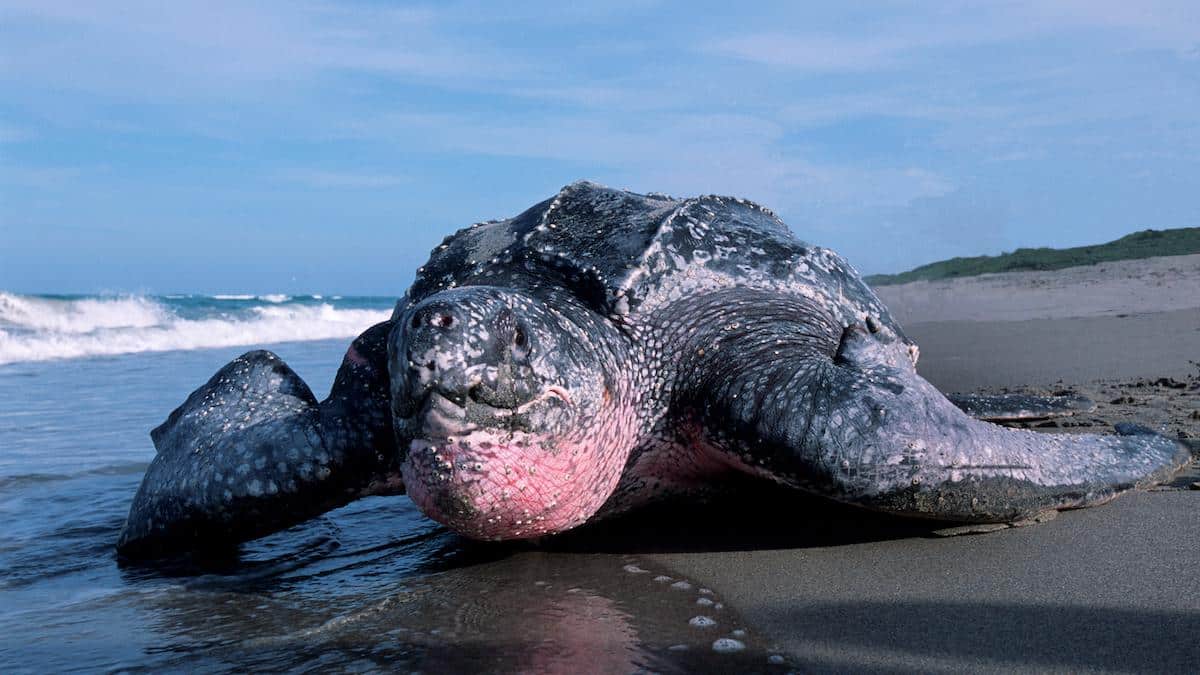

A leatherback turtle in Florida during a rare daytime nesting event. Mark Conlin / VW PICS / UIG via Getty Images
Scientists in a South Florida county have gotten a pleasant surprise this year.
A record number of endangered leatherback sea turtles nested on beaches in Broward County this season, nearly doubling the previous record high.
“It’s difficult to say why Broward County saw such an increase in leatherback nesting this season,” Broward County biologist and sea turtle specialist Stephanie Kedzuf told the South Florida Sun Sentinel.
Leatherback turtles are the largest, most migratory and widest ranging of all sea turtles, according to the U.S. Fish and Wildlife Service. They can grow to be four to eight feet and weigh between 500 and 2,000 pounds. Yet, despite their massive size, they are under threat. The FWS lists them as endangered, and they are considered vulnerable by the IUCN Red List. Their population has fallen an estimated 40 percent in three generations, according to NOAA Fisheries. The main threats to their survival include entanglements with fishing gear, pollution, vessel strikes, the climate crisis and the loss of their nesting habitat.
One of their main U.S. nesting habitats is Florida’s Atlantic coast, where their numbers have declined in recent years. This includes Broward County, where the total number of nests fell to a low of 12 in 2017, the South Florida Sun Sentinel reported.
However, that number has risen every year since, to reach a record of 79 this year. That nearly doubles the previous record of 46 nests in 2012.
Kedzuf told the South Florida Sun Sentinel she was curious to see if other Florida counties saw similarly high numbers. All told, 2,795 nests were counted in the county from sea turtles of all species.
Turtle nesting season in South Florida takes place between March 1 to October 31. Leatherback turtles usually climb up onto the beaches at night and dig holes that they then fill around with 1,000 eggs. When the baby turtles hatch, they run towards the ocean to escape predators.
One threat to this process is artificial lighting, which can confuse the baby turtles and turn them towards the land instead. Because of this, coastal buildings are now required to shield or dim their lights during nesting season.
Conservationists speculated last year that the decrease in human activity due to the coronavirus pandemic may have also made Florida’s beaches more hospitable to turtles.
“The chances that turtles are going to be inadvertently struck and killed will be lower,” Sea Turtle Conservancy executive director David Godfrey told The Guardian. “All of the reduced human presence on the beach also means that there will be less garbage and other plastics entering the marine environment. Ingestion and entanglement in plastic and marine debris also are leading causes of injury to sea turtles.”
- 9 Super Cool Facts About Sea Turtles - EcoWatch
- Sea Turtles in the Florida Keys Have High Tumor Rates. Are ...
- Marine Mammals and Turtles Protected by the Endangered Species ...

 233k
233k  41k
41k  Subscribe
Subscribe 